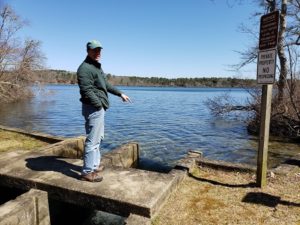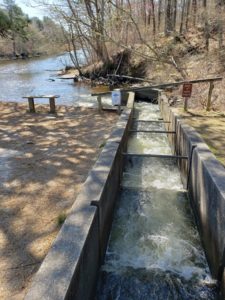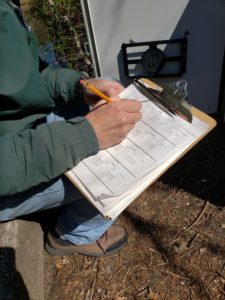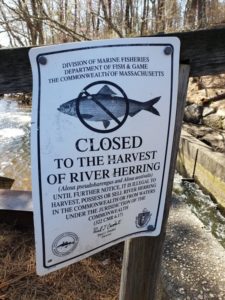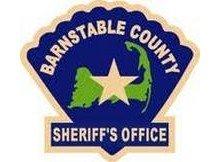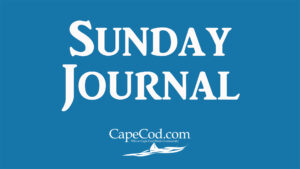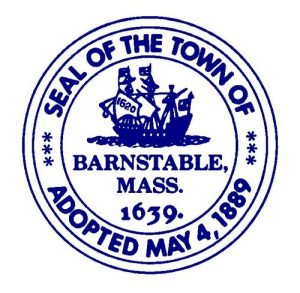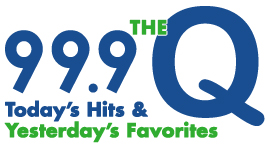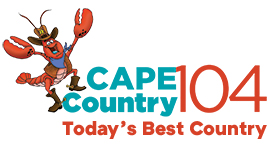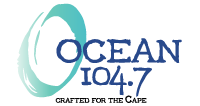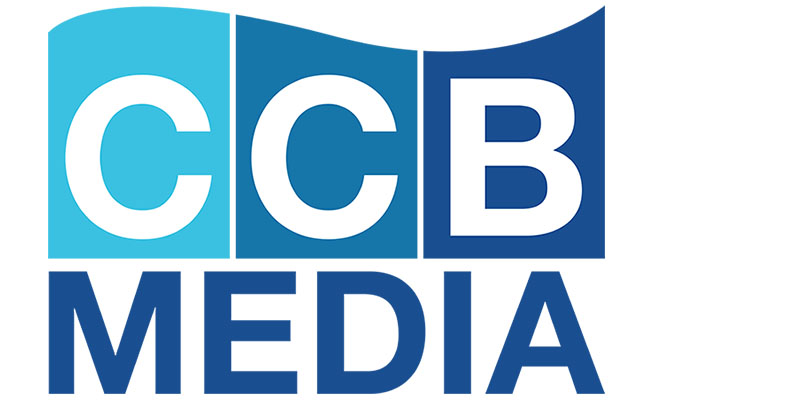With the arrival of spring each year, nature begins to awaken anew. Along with the blossoming trees and flowers, another phenomenon takes place that has drawn visitors and nature enthusiasts, alike, to the ponds and water ways of the Cape for years – the annual herring run.
This is what we call the occasion when herring return from the ocean and swim against the current in local rivers and streams to reach the area’s freshwater ponds, where they will spawn in the summer. And each year, employees and volunteers of the local herring runs count the number of fish passing through.
We spoke recently with the Town of Harwich’s Natural Resources Director, Heinz Proft, who explained the automatic counting process in detail at the Harwich herring run. The Harwich Herring Run takes place just off Depot Street in the West Harwich area. This run goes through the Bells Neck Conservation Area and is home to some substantial efforts to restore the fish’s population in the region.
“One of my responsibilities, when I first come to the counter, is to look at the water level. We use that to help gauge the water flower that goes through the run,” Proft said. “As the tide comes up, the water level rises, the herring will pool in front of the fishing ladder (a series of ‘levels’ that the fish climb), they’ll make their way up and go through the electronic counter and into the reservoir.”
The total distance that the fish are swimming, he said, is about seven miles. The majority of the river is very wide and deep. Once the herring make it up to the freshwater system from the salt water, it becomes narrow and shallow. It’s Proft’s job to make sure the passage from the herring run to Hinckleys Pond is clear of any blockages, debris or obstructions.
As the fish make their way to Hinckleys Pond, they will either remain there, or continue on to Seymour Pond or Long Pond. Long Pond is the largest freshwater body on Cape Cod, Proft added.
The Harwich herring run reported an astonishing 1.2 million herring through the runs last year, which was the largest count in the state.
The electronic counter, which was provided by the Division of Marine Fisheries, has eight tubes, which the fish swim through and are counted. The information travels from the counter to a nearby locked metal box that holds the data on each day’s count. On April 23 of this year, it had recorded upwards of 138,000 thus far this season.
“I’m hoping that we either meet or exceed last year’s grand total come June,” said Proft.
Unlike salmon, which lay their eggs and die, adult herring will make several trips back to the spawning waters over several years. The baby herring, or fry, will take months to hatch, and then make their own journey to the ocean in late summer or early fall.
But, why do we even bother to count the herring at all? Proft explained that, back in 2004, the number of herring coming up through the runs had decreased to the point where the Town of Harwich had to put a moratorium in place to prevent the taking and possessing of herring. In 2006, Massachusetts closed the entire state to the possession and taking of herring, because the counts had dropped everywhere.
Overfishing was only part of that decline. There is also offshore bycatch, or accidental catch, there are populations of seals and other animals for which herring is a big food source. Other factors could include water level and water quality. Proft said there are many variants to take into consideration when talking about an animal population. While you might see 10,000 fish come through in a 24-hour period one day, you may only see 800 another day. It varies greatly.
“Because there had been fewer herring, a counting program was instituted to get an accurate sense of where the herring population stood,” Proft said. “Since then, we have seen numbers generally on the uptick, although it’s not always higher each year. But we’re trending in the right direction. We’re counting so that, if, in fact, the runs open to the taking and possessing of herring at some point, we have a baseline of where they are in numbers.”
Cape Cod has over 20 rivers that are monitored to keep an eye on the river herring population in the area. Herring are vital to the marine ecosystem because they are at the bottom of the food chain. Therefore, they are crucial as a food source for larger fish and animals in and near the water, helping them to survive.





